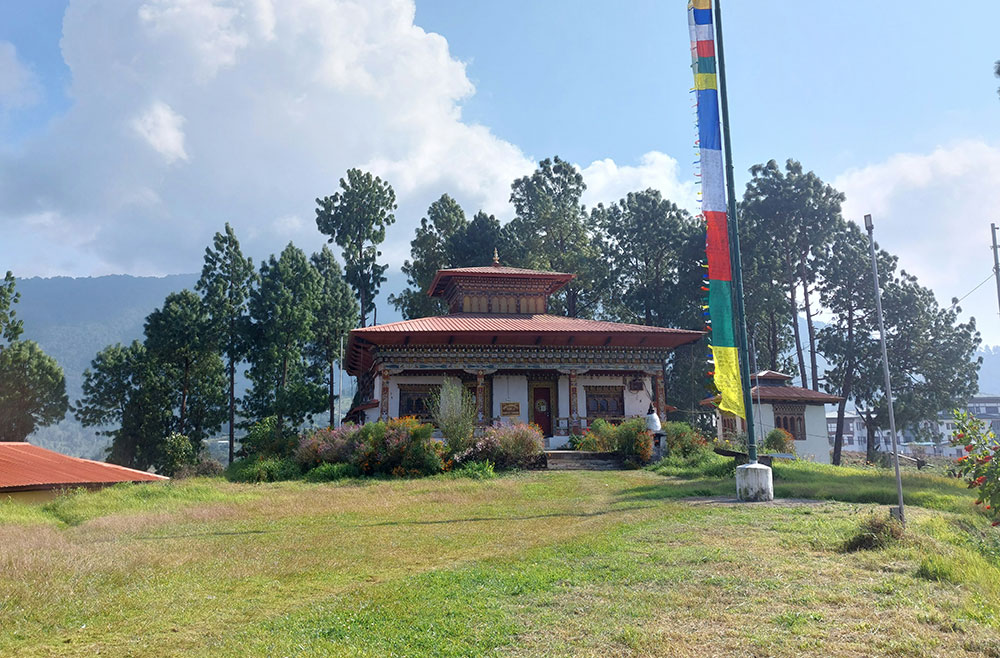Choki Wangmo | Tsirang
This could be the only structure in Bhutan that is a temple for both Hindu and Buddhist faith. Although it has long been the only symbol of religious coexistence, located in the heart of Damphu town, it remains mostly deserted.
The Lam, Namgay Tenzin, said that when he was first posted to the temple about eight months ago, it was in dire need of renovation and maintenance. No one took responsibility for caring for the surroundings of the temple ,even when Damphu town beautification was carried out. “The six-acre land the temple is located on was neglected by development. The streetlights in the area were damaged.”
He said that such conditions were the result of authorities more concerned with passing responsibilities back and forth among themselves. While the thromde said that the temple was under dzongkhag administration, the dzongkhag administration maintained it belonged to Tsirang Dratsang. The dratsang gave the responsibilities to the gewog, he said.
“But it is a gift from His Majesty The Fourth King to people. We should remember that,” he said.
Pandit Mani Karna Gautam said that the temple was built in the early 1970s by late Lyonpo Tamshing Jagar.

Debreys inside Tharpachoeling Lhakhang before renovation
Since his appointment as the pandit in 1992, except for minor maintenance, no major renovation has been carried out. “We proposed renovations to the dzongkhag administration many times.”
In the temple, both Hindu and Buddhist sanctums are in need of renovation. The entrance of the Buddhist temple, to the right, houses choe-long-trul-sum statues. There are no religious instruments and no carpets on the floors.
The Lam said that through the support of donors, he has bought some carpets.
The conditions are no different in the Hindu side of the temple. The windows are damaged and paintings are flaking off the mud walls in which rats have made their homes.
A resident said that he volunteered to repaint the walls but it was against the rules set by the culture department. “There are people interested in supporting its renovation.”
Another resident said that the temple is crumbling without proper care and maintenance. “Such spiritual sanctuaries are supposed to help people relax and rejuvenate. The place looks cold and unwelcoming.”
Mani Karna Gautam remembers the place brimming with visitors.
Without caretakers, the lam and the pandit claim that they have to cut the grass, clean the surroundings, and build minor structures such as drains.
“The temple area needs a major facelift, including meditation houses,” a resident said.
Another said: “There are cleaners and sweepers in the town but not in the temple. They carried out development work up to the temple gate and then neglected the temple area completely. It is shameful.”
The temple gets water only once a day.
“We get water at around midnight. If we want people to seek spiritual solace in the temple, we need such amenities,” Namgay Tenzin said.
One of the reasons for fewer visitors, some say, is the construction of lhakhangs and mandirs in gewogs. There are more than 24 lhakhangs and mandirs in 12 gewogs in Tsirang.
According to the Tsirang’s senior culture officer, Kelzang Jamtsho, the dzongkhag administration arranged wall painting and debreys maintenance at the lhakhang. He said that the tender for renovation was awarded to the contractors.


